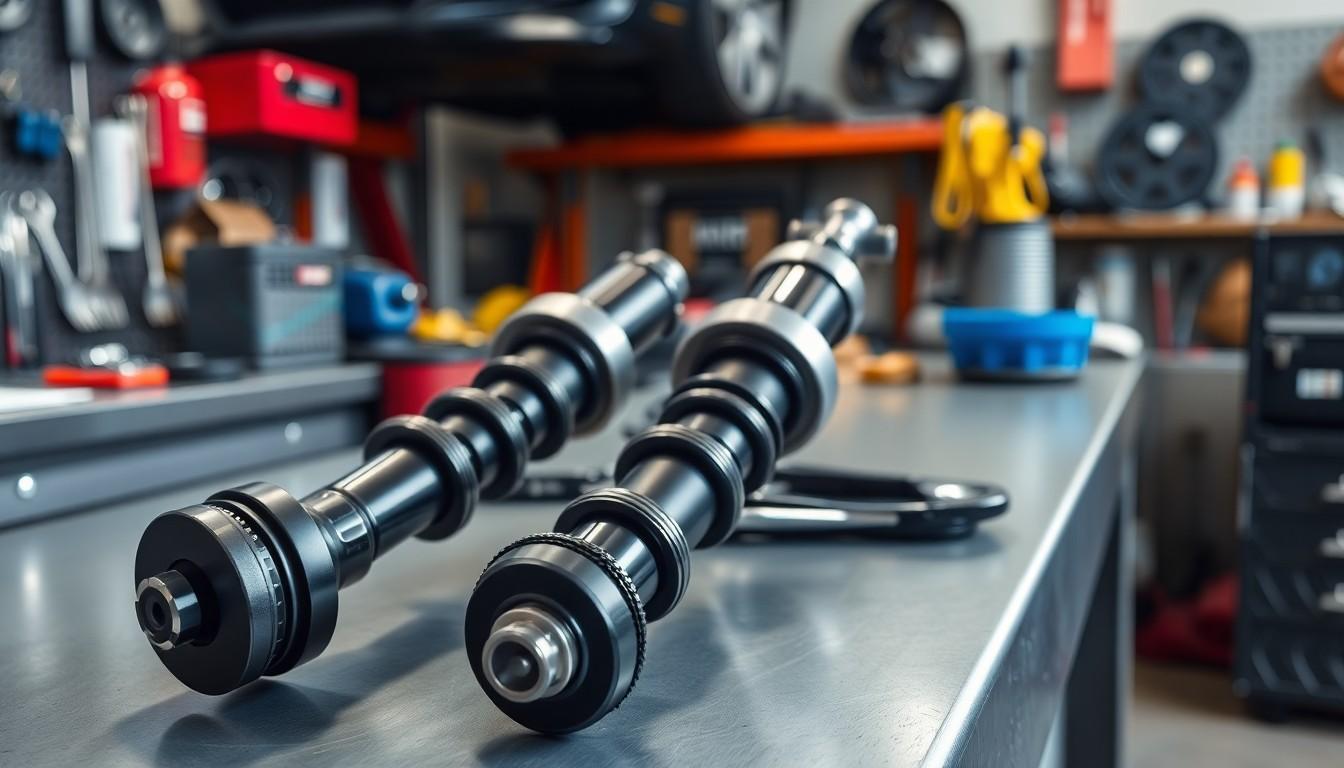Ever felt your car bounce like a basketball after hitting a pothole? That’s your vehicle telling you something’s wrong with those crucial components underneath—the shocks. We’ve all experienced that uncomfortable feeling when our ride isn’t as smooth as it should be.
Shocks, or shock absorbers, are critical suspension components that control how your car moves over uneven surfaces. They’re designed to absorb and dampen the energy from road bumps, keeping your tires firmly planted on the pavement. Without properly functioning shocks, you’d feel every crack in the road, and your handling and braking could be seriously compromised.
Understanding Car Shock Absorbers
Car shock absorbers function as critical components of a vehicle’s suspension system, controlling the impact and rebound movement of springs and suspension. These hydraulic devices convert kinetic energy into heat energy, effectively dampening the bouncing motion caused by road irregularities.
Most modern vehicles use twin-tube or mono-tube shock designs. Twin-tube shocks contain two nested cylindrical tubes with hydraulic fluid between them, while mono-tube shocks feature a single pressure tube with a floating piston that separates oil from pressurized gas.
Shock absorbers work through a straightforward hydraulic principle. When your car hits a bump, the piston inside the shock compresses, forcing oil through tiny holes in the piston. This restricted flow creates resistance, slowing down suspension movement and preventing excessive bouncing.
Quality shock absorbers deliver multiple benefits beyond comfort. They maintain optimal tire-to-road contact, prevent excessive wear on suspension components, and enhance vehicle stability during cornering and braking. Performance vehicles often use specialized shocks with adjustable damping rates to fine-tune handling characteristics.
Regular inspection of shock absorbers is essential for maintaining your vehicle’s safety and performance. Signs of shock failure include excessive bouncing after bumps, uneven tire wear, nose-diving during braking, and unusual fluid leaks around the shock body.
How Shock Absorbers Work
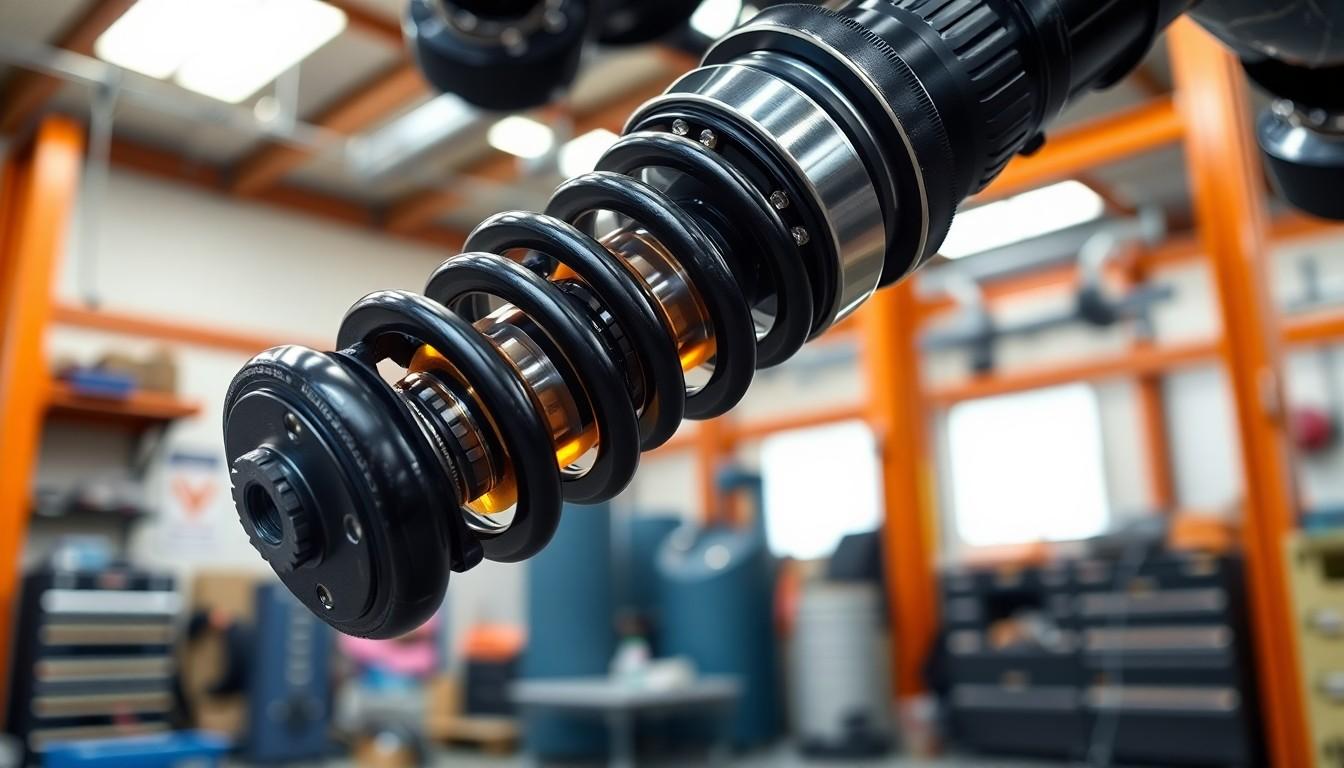
Shock absorbers function as hydraulic pump-like devices that manage the movement of your vehicle’s springs and suspension. They’re designed to absorb the kinetic energy generated when your car travels over uneven surfaces, converting this energy into heat rather than transmitting it to the chassis.
The Basic Mechanics Behind Shock Absorbers
Shock absorbers operate on a principle of resistance, controlling the compression and rebound cycles that occur when your wheels encounter bumps or potholes. Inside each shock, hydraulic fluid moves through precisely calibrated valves as the piston rod compresses and extends. This regulated fluid movement creates resistance that dampens excessive suspension movement, preventing your car from bouncing continuously after hitting road irregularities. By converting motion energy into heat, shocks maintain tire contact with the road surface, improving traction, improving braking capacity, and ensuring overall vehicle stability during various driving conditions.
Types of Shock Absorbers
Twin tube shock absorbers represent the most common variety found in many passenger vehicles, featuring an inner tube containing the piston and hydraulic fluid, with an outer tube serving as a fluid reservoir. Mono tube shocks use a single tube housing both the piston and hydraulic fluid, offering superior heat dissipation and higher pressure handling capabilities that make them ideal for performance vehicles. Adjustable shock absorbers provide customization options, allowing drivers to modify damping characteristics according to their preferences or exact driving conditions. For advanced applications, ASD (Automatic Stabilizer Device) and PSD (Pressure Stabilizer Device) shock absorbers automatically adjust their damping response based on road conditions, optimizing the balance between comfort and handling without driver intervention.
Signs Your Car Shocks Need Replacement
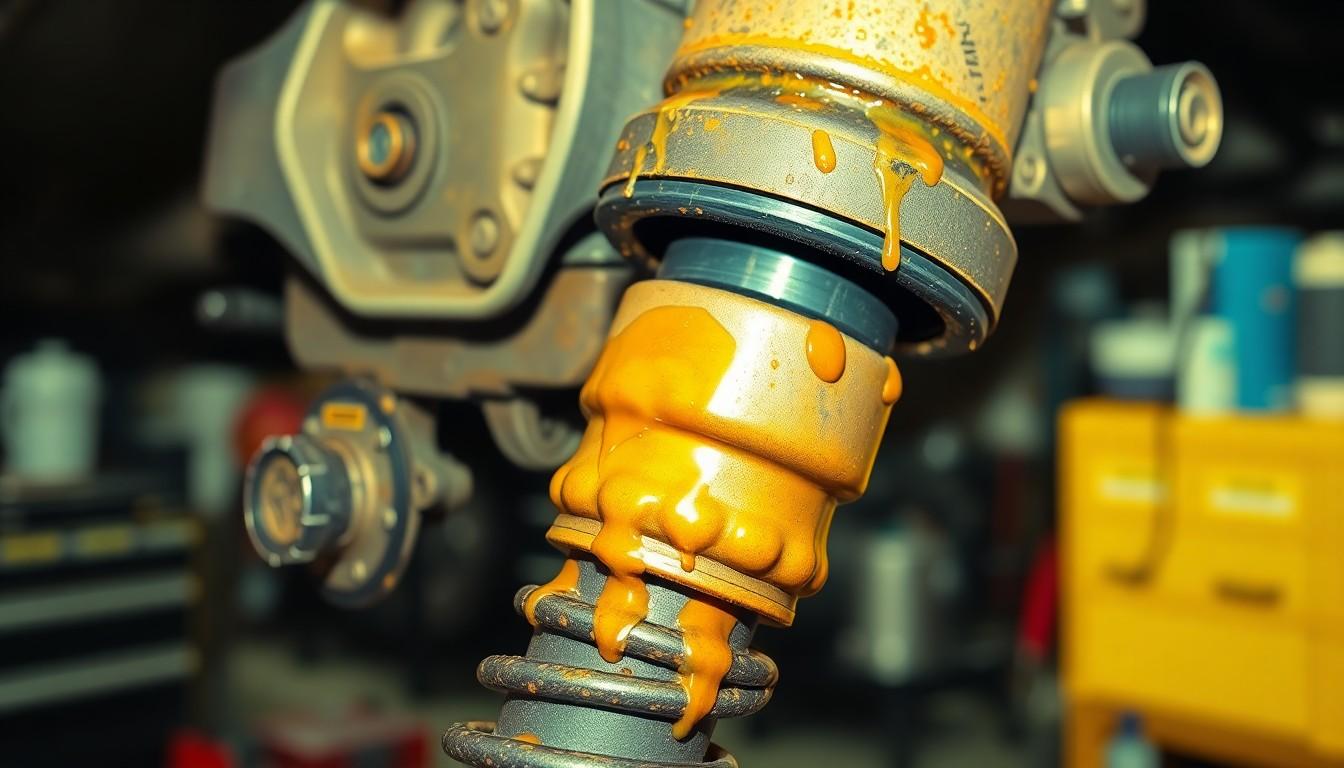
Recognizing when your shock absorbers need replacement is crucial for maintaining your vehicle’s safety and performance. Worn shocks can significantly impact handling, braking distance, and overall ride comfort.
Visual Indicators
Oil leaks around the shock absorber body are a definitive sign that replacement is necessary. These leaks occur when the seals deteriorate, allowing hydraulic fluid to escape and compromising the shock’s damping abilities. Physical damage such as dents, bends, or corrosion on the shock body or mounting points indicates structural compromise that requires immediate attention. Uneven tire wear patterns, particularly cupping or scalloping across the tread surface, often result from bouncing wheels that can’t maintain consistent contact with the road due to ineffective shock absorption.
Performance Symptoms
Excessive bouncing after hitting bumps or dips demonstrates that your shocks aren’t properly dampening the suspension movement. Your vehicle might swerve or drift during turns or lane changes, creating potentially dangerous handling situations on uneven road surfaces. Nosediving when braking or rear-end squatting during acceleration indicates the suspension isn’t being adequately controlled by the shock absorbers. Unusual sounds including clunking, rattling, or hissing coming from the suspension area typically signal internal shock damage or mounting hardware that’s become loose. Increased stopping distances can occur as deteriorated shocks prevent consistent tire-to-road contact during braking, compromising your vehicle’s safety in emergency situations.
Benefits of Properly Functioning Shocks
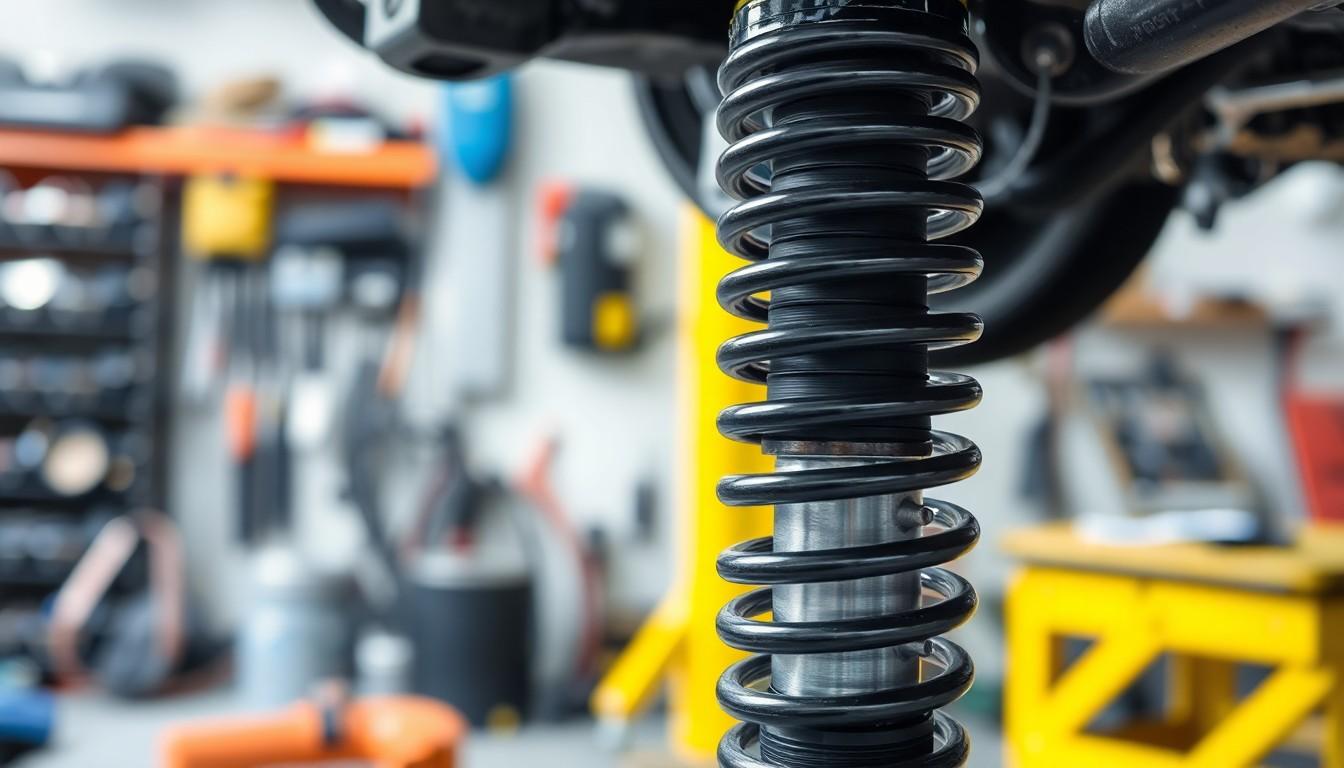
Properly functioning shock absorbers deliver multiple advantages that enhance your vehicle’s performance and safety. These critical components not only improve your driving experience but also contribute to the longevity of various vehicle parts.
Improved Handling and Safety
Shock absorbers ensure your vehicle’s tires maintain consistent contact with the road surface at all times, significantly improving control and braking response. This constant road contact is crucial for vehicle stability during maneuvers, especially in emergency situations where control can mean the difference between safety and danger. Shock absorbers effectively control body movement and wheel oscillations, contributing directly to accident prevention and passenger protection. Their performance directly influences your vehicle’s braking capacity, allowing for shorter stopping distances and improved stability during sudden braking events. By properly dampening the vehicle’s movement in response to road irregularities, shocks prevent excessive weight transfer that could otherwise compromise handling and control in critical driving situations.
Extended Tire Life
Quality shock absorbers distribute weight evenly across the tire surface, preventing the uneven wear patterns that often result from compromised suspension components. This even distribution leads to longer-lasting tires and reduced replacement frequency. The dampening effect minimizes vibration transfer from rough roads to your vehicle’s tires, protecting them from excessive stress and premature wear. Functioning shocks prevent the bouncing motion that causes tires to repeatedly impact the road surface with varying pressure, a condition that quickly degrades tire tread and sidewalls. By maintaining optimal tire contact with the road, shock absorbers also improve fuel efficiency since properly rolling tires encounter less resistance than those that bounce or skip across the pavement.
Differences Between Shocks and Struts
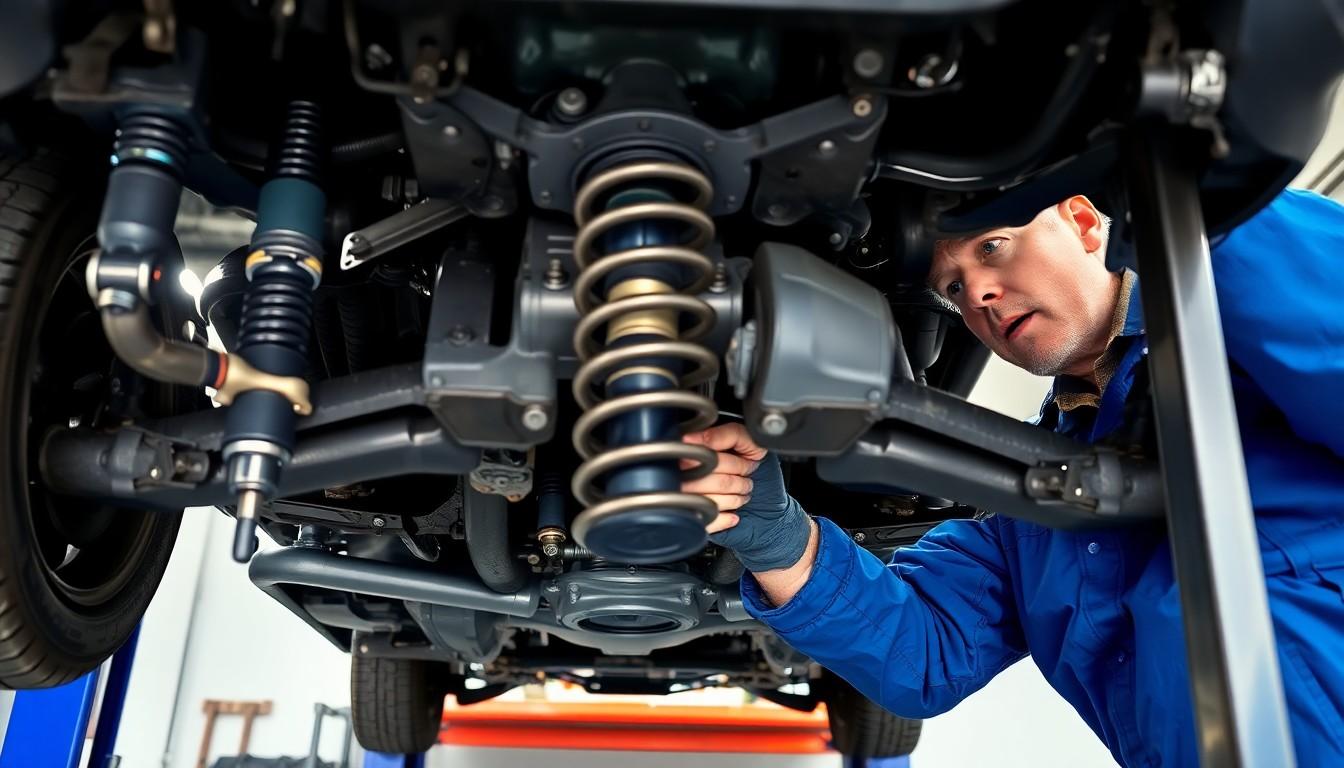
Shocks and struts both serve crucial roles in your vehicle’s suspension system, but they’re distinctly different components with unique functions and applications. Understanding these differences helps you better maintain your vehicle and make informed decisions when repairs become necessary.
Shocks
Shock absorbers function as standalone components that work alongside other suspension parts like springs and struts. They’re typically installed in the rear suspension of many vehicles, though some models feature them in the front suspension as well. The primary purpose of shocks is controlling the movement of your vehicle’s springs and suspension, which ensures stability and ride comfort on various road surfaces.
Struts
Struts represent more complex suspension components that combine multiple functions into a single unit. These integrated parts merge the roles of a shock absorber with those of a suspension spring and upper control arm. Most commonly found in front suspensions, struts provide substantial structural support to your vehicle’s suspension and steering systems, going beyond just dampening vibrations.
Key Differences
Structure: Shock absorbers feature a simpler, standalone design focused specifically on dampening, while struts integrate multiple suspension functions into one comprehensive component.
Function: Both components dampen vibrations effectively, but struts also deliver crucial structural support and often integrate directly with the steering system.
Location: You’ll find shock absorbers in both front and rear suspensions depending on vehicle design, whereas struts appear more frequently in front suspensions due to their additional structural role.
Replacement Considerations: Replacing struts generally requires wheel alignment afterward since they’re integral to your vehicle’s steering geometry, while shock replacement typically doesn’t necessitate this additional service.
Cost Factors: Strut replacement usually costs more than shock replacement due to their complexity and the additional alignment service required after installation.
How to Choose the Right Shocks for Your Vehicle
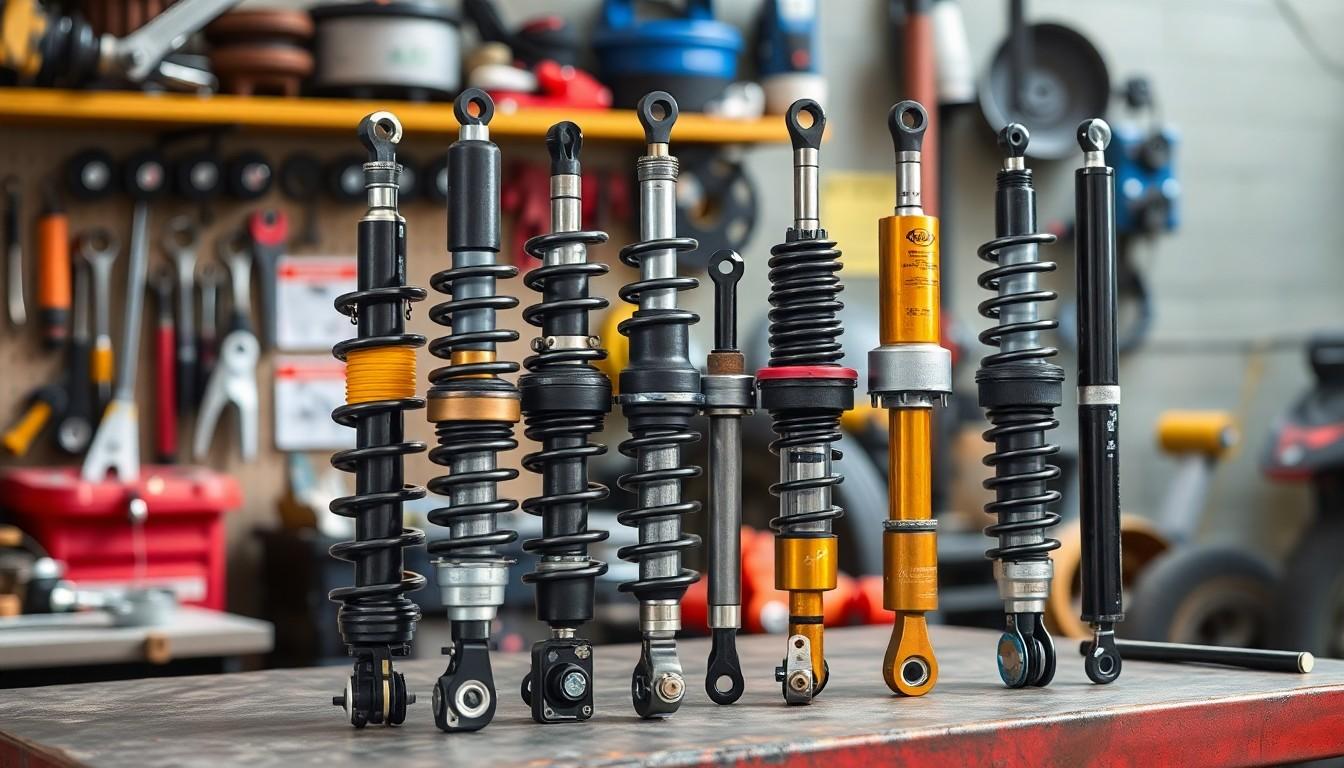
Selecting appropriate shock absorbers for your car requires balancing several factors including driving style, vehicle type, and budget. The right shocks can dramatically improve your vehicle’s performance, handling, and comfort on the road.
Performance vs. Comfort Considerations
Performance-oriented drivers benefit from gas shocks or mono-tube shocks that provide faster response times and superior damping under demanding conditions. These shock types excel at maintaining tire contact during aggressive cornering or when driving on rough terrain. Mono-tube shocks offer excellent heat dissipation capabilities, making them ideal for sports cars and performance-focused applications where consistent handling is crucial.
Comfort-prioritizing drivers typically prefer oil (hydraulic) shocks or twin-tube designs that deliver smoother vibration damping. These shock absorbers excel at creating a gentler ride quality by effectively absorbing minor road imperfections. Twin-tube shocks operate more quietly than their performance counterparts, contributing to a more peaceful cabin environment. Daily commuters and family vehicles generally benefit from these comfort-focused options that minimize fatigue during extended drives.
Budget and Quality Factors
Cost considerations often guide shock absorber selection, with oil (hydraulic) shocks and twin-tube designs offering more economical options for standard passenger vehicles. These budget-friendly alternatives provide adequate performance for everyday driving conditions without very costly. Twin-tube shocks typically cost less while still delivering reasonable durability for normal driving conditions.
Quality investments in higher-end shock absorbers like gas or mono-tube designs pay dividends through enhanced longevity and consistent performance. Premium shock absorbers feature superior materials that resist degradation over time and maintain their damping characteristics longer than economy options. Gas shocks, though more expensive initially, often prove cost-effective through their extended service life and reduced replacement frequency. Performance enthusiasts and those who drive in demanding conditions find the additional investment worthwhile for the improved heat dissipation, durability, and consistent handling these premium options provide.
DIY vs. Professional Shock Replacement

DIY Replacement
DIY shock replacement can be a feasible project for those with basic mechanical knowledge and the right tools. Conventional telescopic shock absorbers typically present the lowest difficulty level for home mechanics. Before starting, gather all necessary equipment including a lift or jack, socket set, and possibly a spring compressor if you’re working with coilover or strut replacements. Ensuring you have the correct replacement shocks for your exact vehicle model is crucial to avoid compatibility issues. Safety protocols must be followed rigorously when working under a vehicle, as improper installation can lead to dangerous driving conditions and potential damage to other suspension components.
Professional Replacement
Professional mechanics offer expertise, specialized tools, and efficiency when replacing shock absorbers. Their training allows them to complete the job correctly while simultaneously inspecting other suspension components for wear or damage. Professionals typically finish shock replacements more quickly than DIY enthusiasts due to their experience and dedicated equipment. Many auto shops provide warranties on both parts and labor, giving vehicle owners peace of mind that the work meets manufacturer standards. This warranty coverage isn’t available with DIY installations, making professional replacement valuable for those seeking long-term assurance.
When to Choose Professional Replacement
Professional installation becomes particularly important when dealing with more complex suspension systems like struts or coilovers. These components often require special tools such as spring compressors, which can be dangerous in inexperienced hands. Vehicles with electronic suspension systems or those requiring precise calibration after installation benefit from professional expertise. Consider your comfort level with automotive repairs, available tools, and the complexity of your exact vehicle’s suspension design before deciding between DIY and professional replacement. The additional cost of professional installation often pays dividends through proper setup, comprehensive inspection, and warranty protection.
Conclusion
Understanding your vehicle’s shock absorbers is essential for maintaining optimal performance and safety on the road. These crucial components work tirelessly to ensure a smooth ride while maximizing tire contact with the road surface.
When functioning properly shocks enhance handling improve braking response and extend the life of your tires and suspension components. Pay attention to warning signs like excessive bouncing unusual noises and uneven tire wear as they indicate it’s time for replacement.
Whether you choose DIY replacement or professional service remember that investing in quality shock absorbers suited to your driving style and vehicle type will pay dividends in comfort safety and vehicle longevity. Your car’s suspension deserves this attention to keep you driving smoothly for years to come.
Frequently Asked Questions
What do shock absorbers do in a car?
Shock absorbers control the impact and rebound movement of your vehicle’s springs and suspension. They convert kinetic energy from road bumps into heat energy, dampening the bouncing motion and ensuring your tires maintain contact with the road. This critical function improves comfort, handling, and braking performance while preventing excessive wear on suspension components.
How do I know if my shock absorbers need replacement?
Look for signs including excessive vehicle bouncing after hitting bumps, uneven tire wear patterns, oil leaks on the shocks, nosediving when braking, and increased stopping distances. You might also notice poor handling during turns, unusual noises from the suspension, or visible physical damage to the shock components. These symptoms indicate your shocks are failing.
What’s the difference between shocks and struts?
Shock absorbers are standalone dampening devices found in both front and rear suspensions. Struts are more complex components that combine shock absorber functions with those of a suspension spring and upper control arm, typically in front suspensions. Struts are structural components of the suspension system, while shocks simply dampen movement without supporting vehicle weight.
How often should shock absorbers be replaced?
While there’s no fixed replacement interval, most shock absorbers typically last between 50,000 to 100,000 miles depending on driving conditions, vehicle type, and shock quality. Regular inspection is recommended at each oil change. Replace them when you notice performance issues like excessive bouncing, handling problems, or uneven tire wear.
Can I replace shock absorbers myself?
Yes, DIY replacement is possible if you have basic mechanical knowledge, proper tools, and safety equipment like jack stands. However, the job requires working under a raised vehicle and dealing with potentially rusty components. Professional installation is recommended for complex suspension systems, vehicles with electronic suspensions, or if you lack experience with automotive repairs.
How do different types of shock absorbers compare?
Twin-tube shocks are common in passenger vehicles and more economical. Mono-tube shocks offer superior heat dissipation and pressure handling, making them better for performance applications. Oil (hydraulic) shocks prioritize comfort, while gas shocks provide enhanced damping and handling. Your choice should match your driving style, vehicle type, and budget.
How do shock absorbers affect fuel efficiency?
Properly functioning shock absorbers improve fuel efficiency by maintaining consistent tire contact with the road. When shocks fail, tires bounce and skip over road surfaces, creating irregular rolling resistance that forces the engine to work harder. Good shocks minimize these inefficiencies by controlling suspension movement, resulting in smoother driving and better fuel economy.
Are premium shock absorbers worth the extra cost?
Premium shock absorbers often justify their higher price through superior damping performance, longer service life, and better heat dissipation. They typically use higher-quality materials and more advanced technologies. For drivers who regularly face challenging road conditions, tow heavy loads, or prioritize handling performance, the investment in premium shocks can be worthwhile for safety and comfort.

